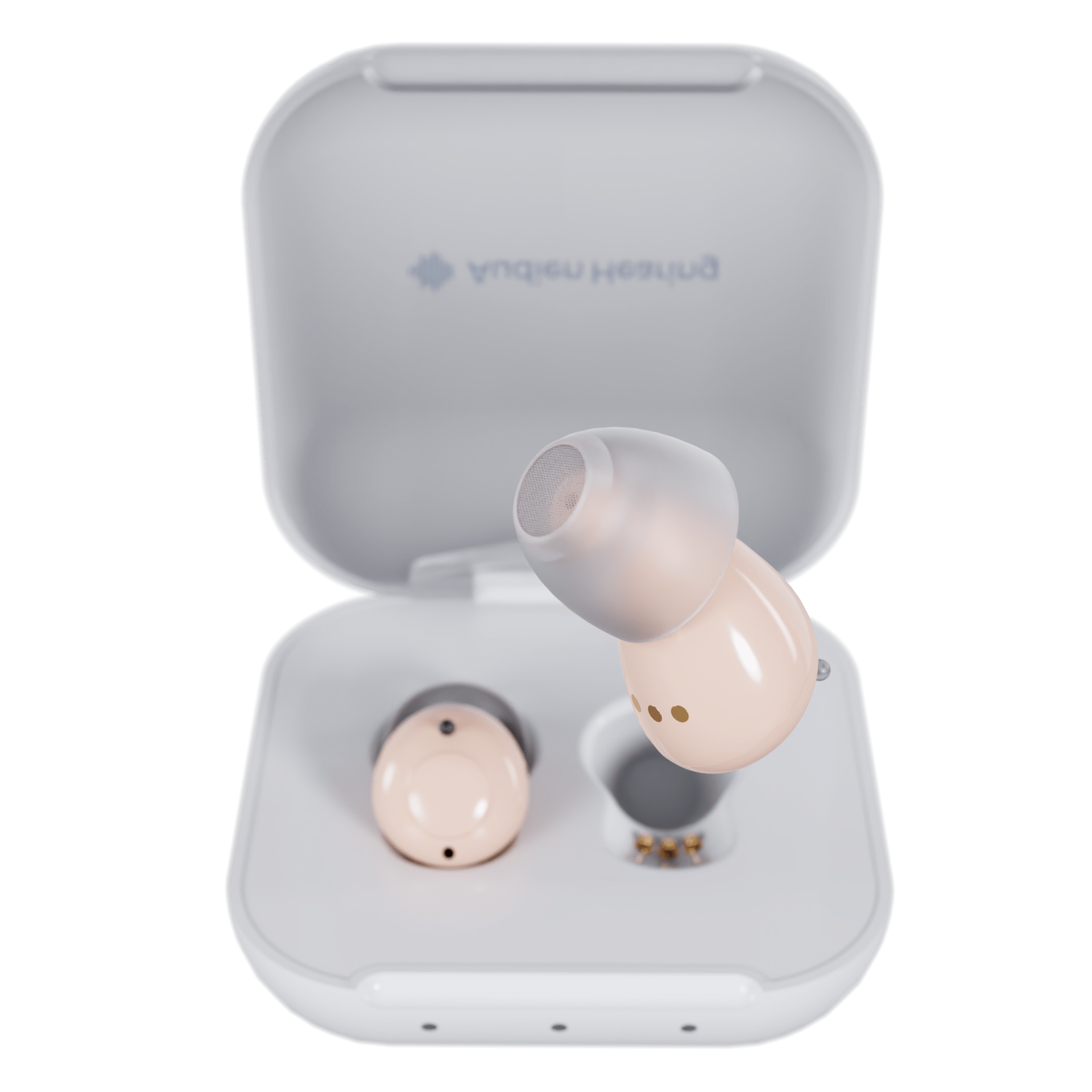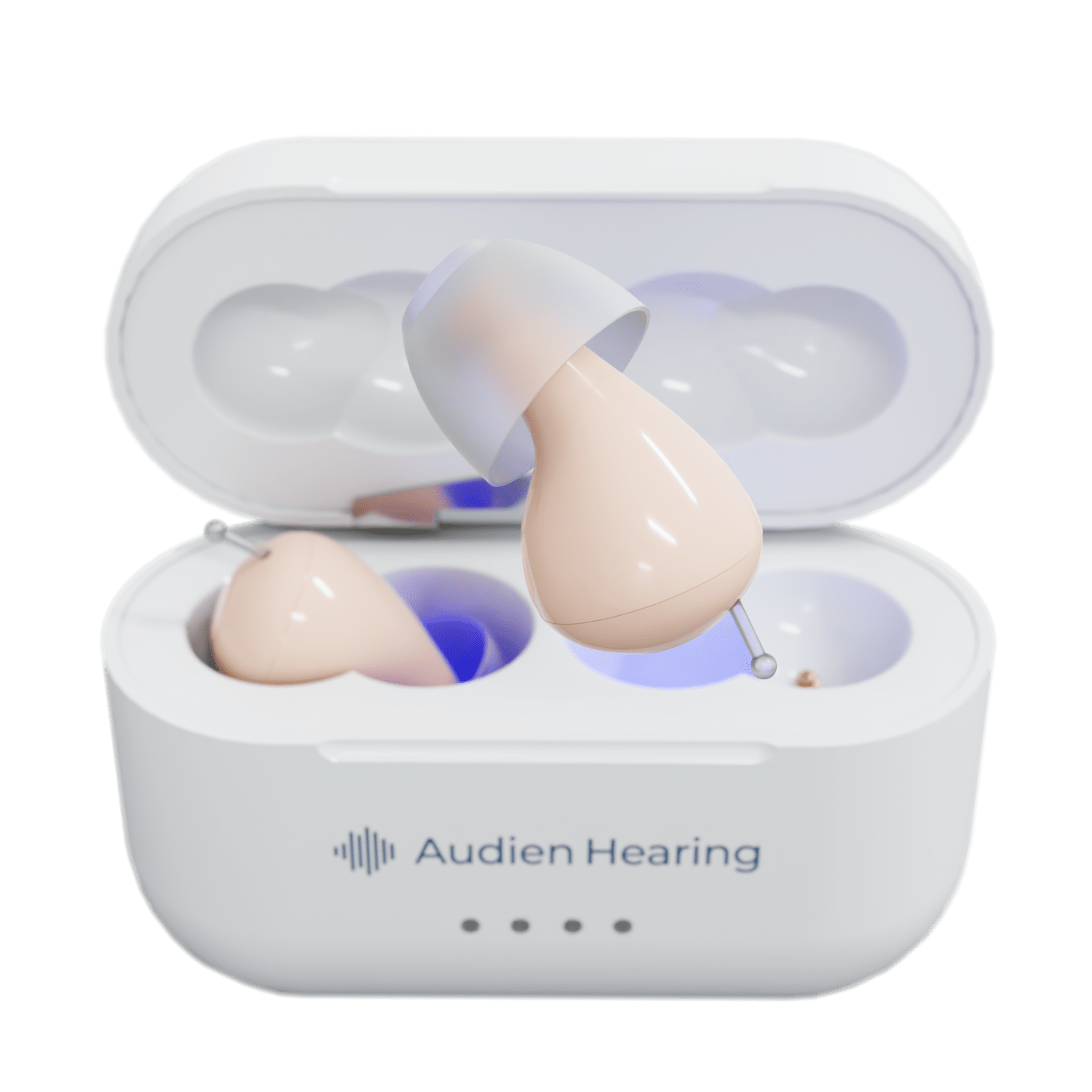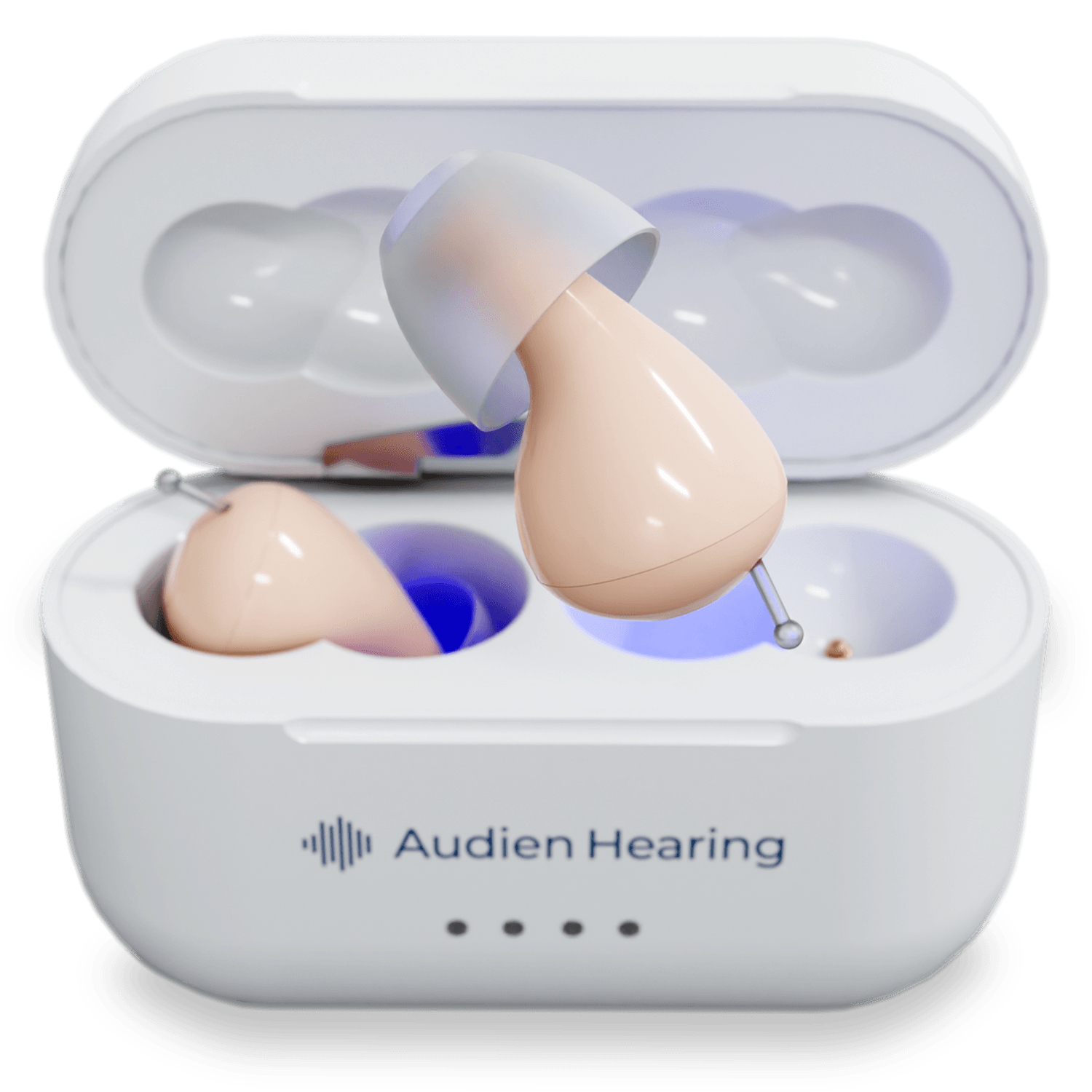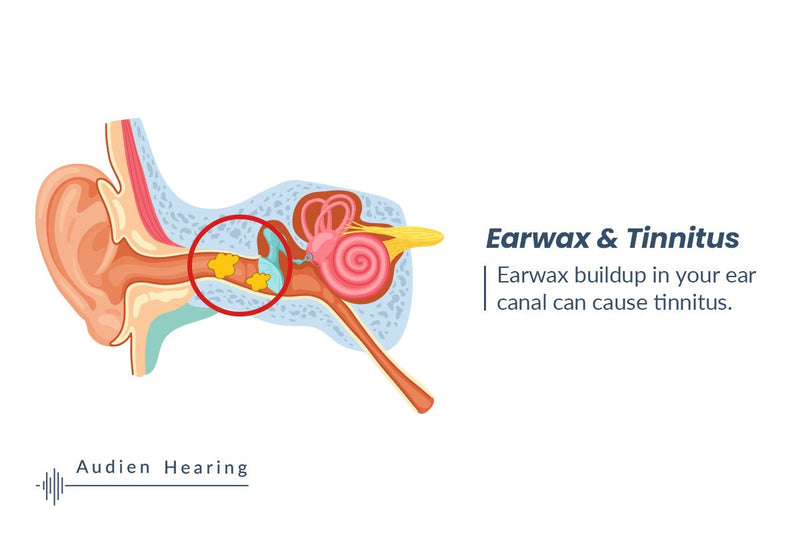Tinnitus can be caused by earwax buildup in your ear canal. In this article we'll explain in further detail the science behind earwax buildup and its impact on both general hearing health and tinnitus.
What is Tinnitus?

Tinnitus is the experience of hearing “nonexistent” noise in your ears. People describe a ringing, but you could also hear hissing, buzzing, roaring, or clicking. The sound you think you hear can come and go or be constant. Some people hear a high volume of sound, and others experience background noise. Tinnitus affects between 15 and 20 percent of the population. Tinnitus is not a disease — it's a symptom of an underlying problem like wax impaction in your auditory system. To understand what causes tinnitus, you should understand:
How We Hear
The auditory system includes all the parts of the outer and inner ear and the part of the brain that interprets sound.
- Sound funnels through the outer ear and the auditory canal to the eardrum.
- Sound causes the eardrum and tiny attached bones to vibrate.
- These vibrations reach the spiral-shaped cochlea in the inner ear.
- The cochlea transforms sound into nerve impulses that travel to the auditory cortex of the brain.
- The brain interprets the sound.
Anything that disrupts this system can cause tinnitus. Possibilities include certain drugs, deterioration, or damage to parts of the ear, Meniere’s disease, otosclerosis, high blood pressure, anemia, allergies, ear infections, and impacted ear wax.
How Does Impacted Ear Wax Cause Tinnitus?
Ear wax or cerumen prevents infection in your ear canal and eardrum. Usually, wax works its way to the outer ear, but when it doesn't, and too much ear wax accumulates in the ear canal, it gathers debris, hardens, and blocks up the auditory system. Ear wax impaction can be caused by things like cotton swabs, ear buds and earphones.
Usually, the blockage only causes poor hearing, but sometimes the system tries to overcompensate for the reduction in sound. When sound is interrupted by the impacted wax, and neural circuits fail to receive the stimulation they are used to, the circuits react by "chattering." Our brains interpret the neurological activity as sound and tell us to hear ringing, buzzing, roaring, or other sound patterns when these sounds don’t exist.
How to Remove Impacted Ear Wax at Home

You can go to a doctor to have impacted ear wax removed or use either household staples or over the counter ear wax removal kits and products. You can use some products you have around the house as ear drops to soften hardened wax. Tilt your head to one side and use a dropper to put a few drops of hydrogen peroxide, mineral oil, olive oil, or glycerin into your ear. After about five minutes, lie on your side on a towel to let the drops and wax drain out. You may need to repeat the process daily for up to two weeks to get all the wax out. After you have softened the impacted wax, you can also buy ear wax removal kits and use them to irrigate your ear with warm water. Warm water flowing through the ear can wash out loosened wax. If impacted ear wax caused your tinnitus, removing it should solve the problem and restore normal hearing.













